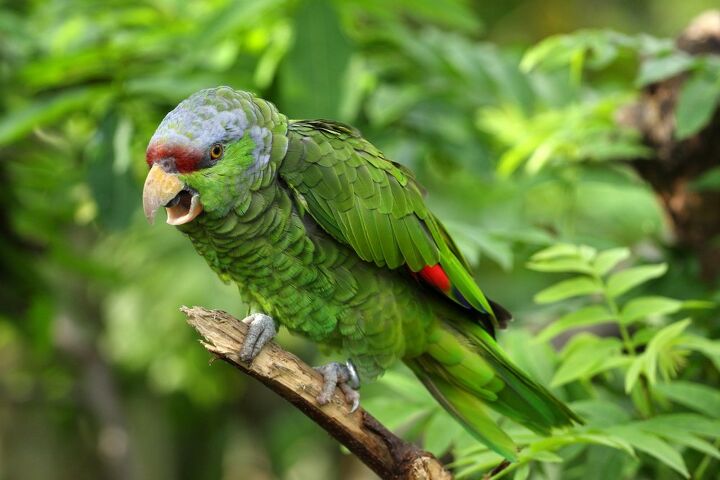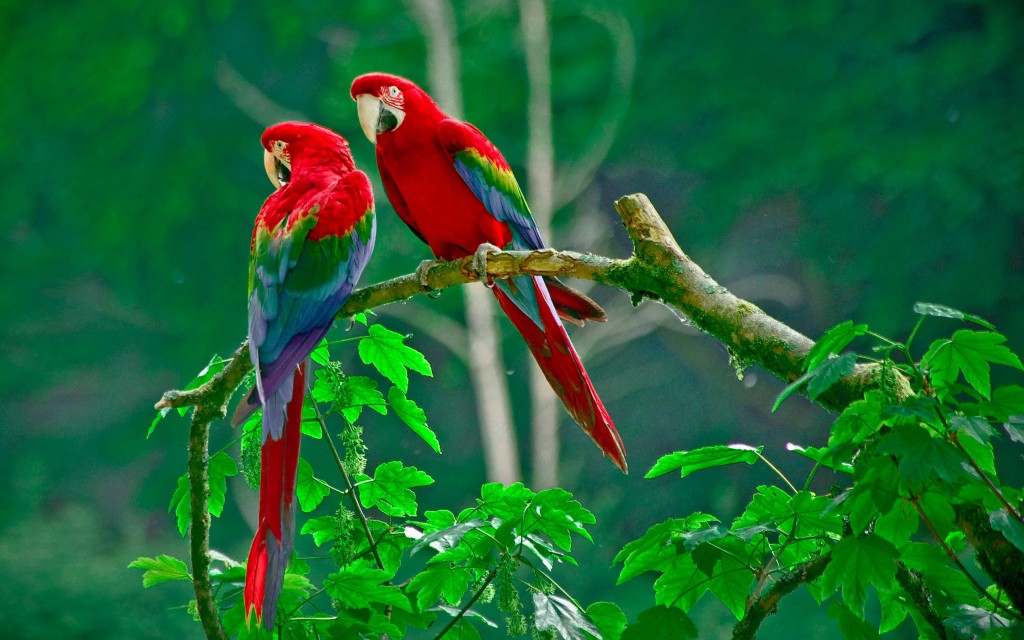Blue and Gold Macaws
Meet the Blue and Gold Macaws: A True Avian Marvel
Blue and Gold Macaws (Ara ararauna) are one of the most remarkable and fun-loving members of the parrot family. These beautiful parrot species are well-known for their vibrant blue and yellow feathers, sharp minds, and close-knit social bonds. These birds, which are native to South American forests, have captivated birdwatchers all over the world with their beauty and endearing personalities. Macaws are extraordinary birds, admired for their intelligence, beauty, and affectionate nature. Whether observed in the wild or kept as pets, they captivate with their vibrant colors and lively personalities.
A Closer Look: The Stunning Appearance of Blue and Gold Macaws

Size and Structure
Blue and Gold Macaws are large parrots, typically measuring around 30 to 34 inches (76 to 86 cm) in length, including their long tail feathers. They have a wingspan of approximately 41 to 45 inches (104 to 114 cm) and can weigh between 900 to 1200 grams.
Vibrant Plumage and Unique Features
Their striking plumage consists of a brilliant blue back and wings, contrasted with a golden yellow chest and underparts. The face is mostly bare with white skin and fine black lines. The beak is strong, curved, and black, adapted for cracking nuts and seeds.
Exploring Their Natural Habitat: Where Do They Come From?
Macaws are social creatures that live in pairs or flocks. Often seen soaring in groups, they rely on their powerful beaks to crack open tough nuts and seeds, an adaptation essential for their survival in the wild.
Natural Habitat and Geographic Range
The South American tropical rainforests, especially those in Brazil, Venezuela, Colombia, Bolivia, and Peru, are home to the Blue and Gold Macaw. They flourish in savannas, wetlands, and densely forested regions.
The Perfect Environment for Survival
These macaws prefer tall trees near rivers and swamps, where they can find food, nesting sites, and protection from predators. They are highly adaptable and can also be found in open woodlands and areas near human settlements.
Intelligent and Social: The Personality of Blue and Gold Macaws
How Smart Are These Birds?
The Blue and Gold Macaw is a very playful, intelligent, and loving bird. They are common pets because of their capacity to develop close relationships with people. Being skilled mimics, these birds pick up words, phrases, and even sounds from their environment. Some are able to expand their vocabulary and take pleasure in engaging in dialogue.
Social Life: Flock Mentality and Bonding
These macaws are social creatures that form strong bonds with their mates and human caretakers. In the wild, they are often seen flying in pairs or small groups. They use various vocalizations—squawks, screams, and calls—to communicate with their flock. Body language, such as feather fluffing and wing spreading, also plays a crucial role in expressing emotions.
When kept as pets, they require plenty of social interaction to prevent loneliness and boredom. Their intelligence means they require constant mental stimulation. Without proper engagement, they may develop destructive behaviors such as feather plucking and excessive screaming. Providing toys, puzzles, and interactive play is essential to keeping them happy.
What Do Blue and Gold Macaws Eat?

The Wild Diet
Blue and Gold Macaws eat a variety of fruits, nuts, seeds, berries, and vegetation in their natural environment. One of their favorite foods is palm nuts, which are high in vital fats and nutrients. In order to counteract the toxins from some foods, they also consume clay from riverbanks.
Proper Nutrition for Pet Macaws
A balanced diet for a pet macaw includes:
- High-quality pelleted parrot food.
- Fresh fruits (apples, bananas, mangoes, berries)
- Vegetables (carrots, spinach, broccoli)
- Nuts (in moderation due to high-fat content)
- Occasional treats like cooked grains or scrambled eggs
Avoid feeding them avocados, chocolate, caffeine, and processed foods, as these can be toxic.
The Fascinating Life Cycle of Blue and Gold Macaws
Mating and Pair Bonds
Blue and Gold Macaws reach sexual maturity around 4 to 6 years of age. They create solid pair bonds and are monogamous. Although it varies by location, the rainy season is usually when the breeding season takes place.
Raising the Next Generation
The female deposits two to three eggs in the tree cavities where they nest. The incubation period lasts about 24 to 28 days, and both parents take turns caring for the chicks. The young fledge at around 3 months but may stay with their parents for several months before becoming independent.
How Long Do They Live? Understanding Their Lifespan and Health
Blue and Gold Macaws can live remarkably long lives if given the right care. They can live up to 70 years or longer in captivity, whereas in the wild they only live 30 to 50 years. They are prone to numerous health problems, though, such as:
- PBFD: A viral infection that affects the structure of the beak and feathers is called Psittacine Beak and Feather Disease.
- Aspergillosis: A respiratory system fungal infection.
- Nutritional Deficiencies: Often caused by imbalanced diets lacking essential nutrients.
- Feather plucking is a stress-related behavior that may be a sign of environmental or health problems.
If You Are Considering Purchasing One? Things to Consider Before Adopting
Owning a Blue and Gold Macaw is a long-term commitment requiring time, dedication, and resources. These birds demand significant social interaction and mental stimulation to thrive. Here’s what potential owners should consider:
- Cage Size: A large enclosure (at least 4 ft x 4 ft x 6 ft) with plenty of out-of-cage time is essential.
- Socialization: Regular contact strengthens bonds and keeps loneliness at bay.
- Training: Unwanted behaviors can be reduced with the use of positive reinforcement.
- Enrichment: Boredom is avoided by offering interactive activities, toys, and perches.
Final Thoughts: The Joy of Blue and Gold Macaws
The remarkable beauty, intelligence, and playful nature of Blue and Gold Macaws enchant people. To maintain their wellbeing, they need a lot of care, attention, and conservation work, whether they are kept as pets or in the wild. Their needs and the long-term responsibility involved should be completely understood by anyone thinking about adopting one. We can help preserve these amazing birds and continue to enjoy their company for many generations to come if we comprehend and show respect for them.






